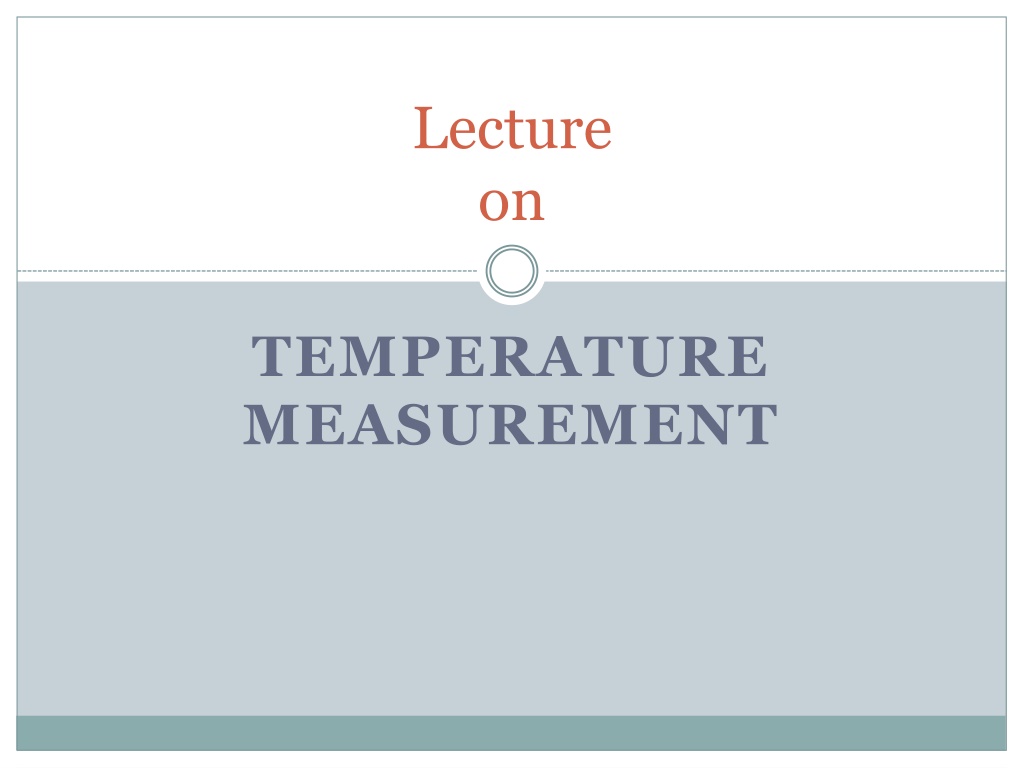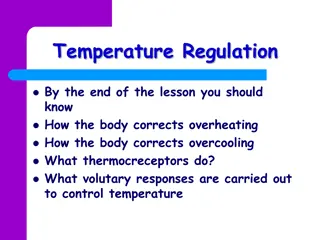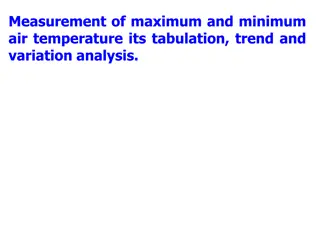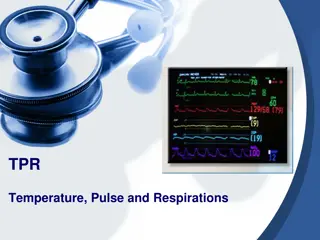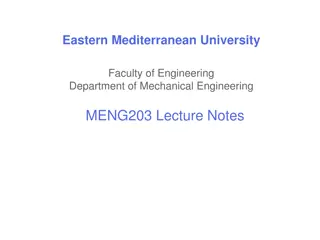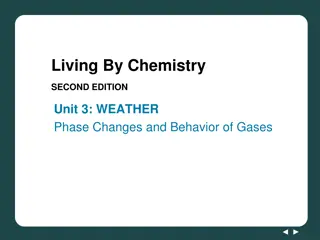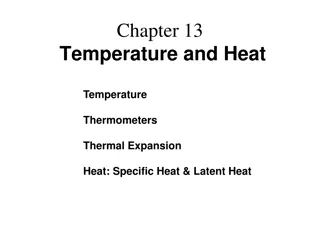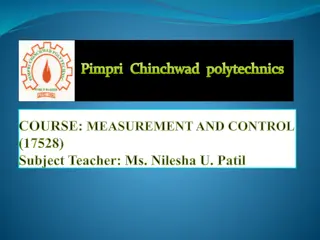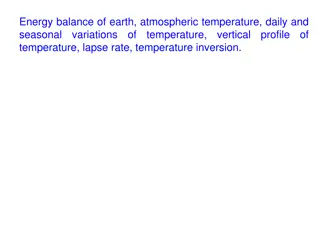Understanding Temperature Measurement Methods
Exploring temperature measurement methods including bimetallic thermometers, resistance thermometers, and thermistors. Learn about the principles of operation, characteristics, and applications of each type of sensor for accurate temperature monitoring and control in various industries.
Download Presentation

Please find below an Image/Link to download the presentation.
The content on the website is provided AS IS for your information and personal use only. It may not be sold, licensed, or shared on other websites without obtaining consent from the author. Download presentation by click this link. If you encounter any issues during the download, it is possible that the publisher has removed the file from their server.
E N D
Presentation Transcript
Lecture on TEMPERATURE MEASUREMENT
Bimetallic Thermometer Two basic principles of operation is to be followed in the case of a bimetallic sensor. 1) A metal tends to undergo a volumetric dimensional (expansion/contraction), according to the change in temperature. change 2) efficient volumetric change depends on this co- efficient of temperature. Different metals temperatures. have different The co- of of rate
Resistance Thermometers It is well known that resistance of metallic conductors increases with temperature, while that of semiconductors generally decreases with temperature. Resistance employing metallic conductors for temperature measurement are called Resistance Temperature Detector (RTD), and semiconductors are termed as Thermistors. RTDs are more rugged and have more or less linear characteristics over a wide temperature range. On the other hand Thermistors temperature sensitivity, characteristics. thermometers those employing have nonlinear high but
Thermistor Thermistors thermometers. They have very high sensitivity but highly nonlinear characteristics. This can be understood from the fact that for a typical 2000 the resistance change at 25 degree Celsius is 80 per degree Celsius, whereas for a 2000 platinum RTD the change in resistance at 25 degree Celsius is 7 per degree Celsius. Thermistors can be of two types: (a) Negative temperature coefficient (NTC) thermistors and (b) Positive temperature co-efficient (PTC) thermistors. Their resistance-temperature characteristics are shown in fig. . The NTC thermistors, whose characteristics are shown in fig. is more common. are semiconductor type resistance
